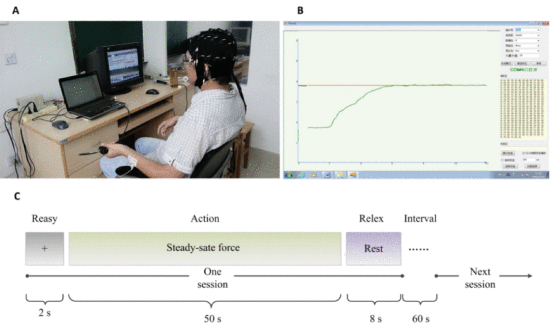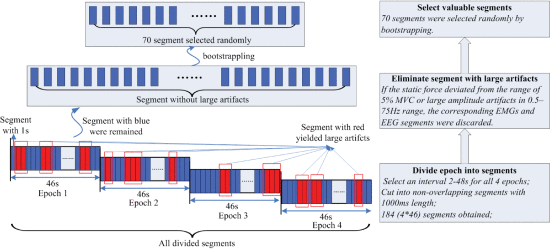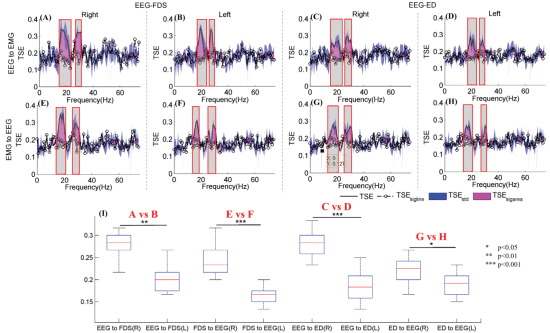


Xiaoling Chen, Yuanyuan Zhang, Yinan Yang, Xiaoli Li*, Ping Xie*
Hand movement in humans is verified as asymmetries and lateralization, and two hemispheres make some distinct but complementary contributions in the control of hand movement. However, little research has been done on whether the information transfer of the motor system is different between left and right hand movement. Considering the importance of functional corticomuscular coupling (FCMC) between the motor cortex and contralateral muscle in movement assessment, this study aimed to explore the differences between left and right hand by investigating the interaction between muscle and brain activity. Here, we applied the transfer spectral entropy (TSE) algorithm to quantize the connection between electroencephalogram (EEG) over the brain scalp and electromyogram (EMG) from extensor digitorum (ED) and flexor digitorum superficialis (FDS) muscles recorded simultaneously during a gripping task. Eight healthy subjects were enrolled in this study. Results showed that left hand yielded narrower and lower beta synchronization compared to the right. Further analysis indicated coupling strength in EEG-EMG(FDS) combination was higher at beta band than that in EEG-EMG(ED) combination, and exhibited distinct differences between descending (EEG to EMG direction) and ascending (EMG to EEG direction) direction. This study presents the distinctions of beta-range FCMC between left and right hand, and confirms the importance of beta synchronization in understanding the mechanism of motor stability control. The cortex-muscle FCMC might be used as an evaluation approach to explore the difference between left and right movement system.
人类的手部运动被证实具有不对称性和偏侧性,两个半球在控制手部运动方面做出了一些不同但互补的贡献。然而,关于左右手运动时运动系统的信息传递是否不同的研究却很少。考虑到运动皮层和对侧肌肉之间的皮质肌肉功能耦合(FCMC)在运动评估中的重要性,本研究旨在通过研究肌肉和大脑活动之间的相互作用来探索左右手之间的差异。在此,我们应用传递谱熵算法(TSE)量化了在抓握任务中同时记录的大脑头皮脑电图(EEG)与趾外伸肌(ED)和趾外屈肌(FDS)肌电图(EMG)之间的联系。八名健康受试者参加了这项研究。结果显示,与右手相比,左手产生的贝塔同步更窄、更低。进一步分析表明,EEG-EMG(FDS)组合在贝塔波段的耦合强度高于 EEG-EMG(ED)组合,并且在下降(EEG 至 EMG 方向)和上升(EMG 至 EEG 方向)方向之间表现出明显差异。本研究揭示了左右手贝塔范围 FCMC 的差异,证实了贝塔同步在理解运动稳定性控制机制中的重要性。皮层-肌肉 FCMC 可作为探索左右运动系统差异的一种评估方法。